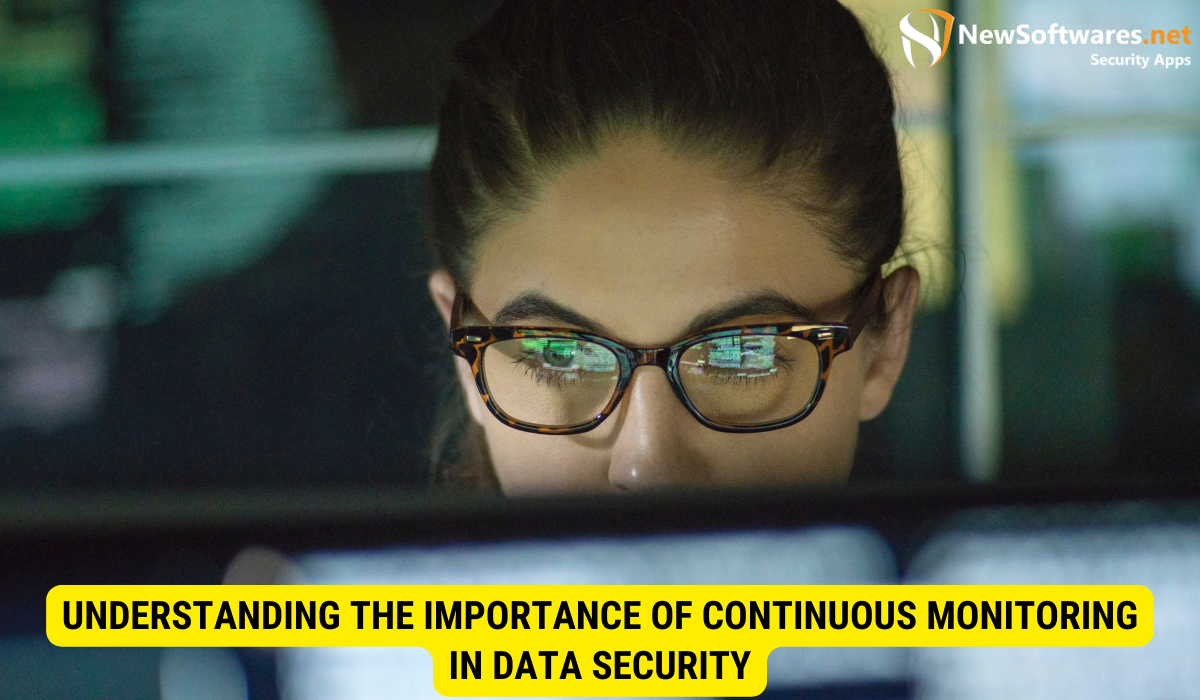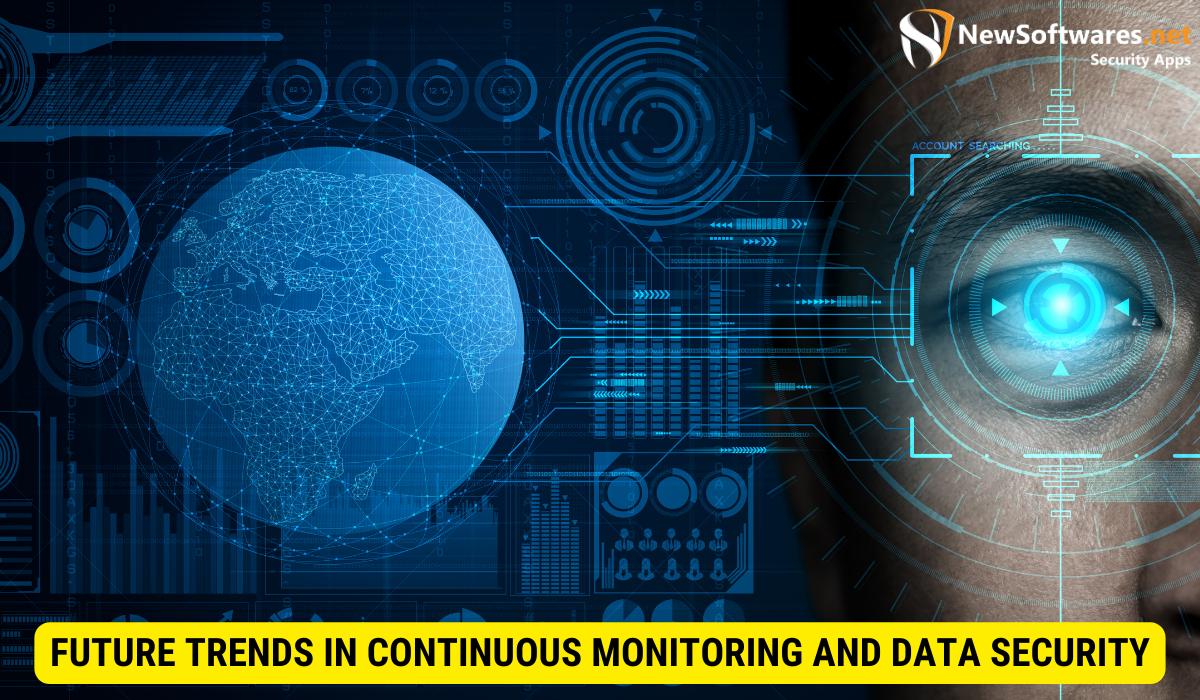Continuous monitoring of information systems for data security involves real-time tracking, alerting, and automated tools. It reduces the risk of data breaches and ensures compliance with regulations while adapting to future trends like AI and cloud computing.
In today’s rapidly evolving technological landscape, maintaining data security is of utmost importance for any organization. With the increasing frequency and sophistication of cyber attacks, it is crucial for businesses to adopt proactive measures to protect their information systems. Continuous monitoring is one such strategy that plays a pivotal role in safeguarding sensitive data. I will explore the importance of continuous monitoring in data security, key strategies for implementation, challenges faced, and the future trends in this field.
Understanding the Importance of Continuous Monitoring in Data Security

Data breaches can have severe consequences, including financial loss, damage to reputation, and legal repercussions. Continuous monitoring provides organizations with real-time visibility into their information systems, enabling them to detect and respond to potential threats promptly. By regularly monitoring network traffic, system logs, and user activities, organizations can identify any deviations from normal behavior and take immediate action to mitigate risks.
Continuous monitoring goes beyond traditional security measures, which often focus on perimeter defense and reactive incident response. It involves an ongoing process of tracking, analyzing, and assessing the security of an organization’s information systems. This proactive approach allows organizations to stay one step ahead of cybercriminals and minimize the impact of potential security incidents.
One of the key aspects of continuous monitoring is the collection and analysis of data from various sources. This includes firewalls, intrusion detection systems, antivirus software, and other security tools. By aggregating and analyzing this data, organizations can gain valuable insights into their security posture and identify any potential vulnerabilities or threats.
Defining Continuous Monitoring in Information Systems
Continuous monitoring refers to the ongoing process of tracking, analyzing, and assessing the security of an organization’s information systems. It involves the collection and analysis of data from various sources, such as firewalls, intrusion detection systems, and antivirus software, to detect potential security incidents or vulnerabilities.
Continuous monitoring is not a one-time event but rather a continuous and iterative process. It requires organizations to establish a framework that enables the collection, analysis, and reporting of security-related data on an ongoing basis. This framework includes the use of automated tools and technologies that can monitor and analyze large volumes of data in real-time.
By implementing continuous monitoring practices, organizations can gain a comprehensive understanding of their security posture and make informed decisions to protect their critical assets. This proactive approach allows them to detect and respond to potential threats before they can cause significant harm.
The Role of Continuous Monitoring in Data Security
Continuous monitoring serves as a proactive approach to data security. It allows organizations to identify and address vulnerabilities in real-time, reducing the likelihood and impact of security breaches. By implementing continuous monitoring practices, organizations can enhance their incident response capabilities and ensure the confidentiality, integrity, and availability of their critical data.
One of the key benefits of continuous monitoring is its ability to provide organizations with real-time visibility into their information systems. This visibility allows them to detect any unauthorized activities or potential security incidents promptly. By identifying and responding to these incidents in a timely manner, organizations can minimize the damage and prevent further compromise of their systems and data.
Continuous monitoring also enables organizations to identify patterns and trends in their security data. By analyzing this data over time, organizations can gain insights into potential risks and vulnerabilities. This information can then be used to develop and implement effective security controls and measures to mitigate these risks.
Furthermore, continuous monitoring plays a crucial role in compliance with regulatory requirements. Many industry regulations, such as the Payment Card Industry Data Security Standard (PCI DSS) and the Health Insurance Portability and Accountability Act (HIPAA), require organizations to have robust security monitoring practices in place. By implementing continuous monitoring, organizations can ensure they meet these regulatory obligations and avoid potential penalties or legal repercussions.
In conclusion, continuous monitoring is an essential component of a comprehensive data security strategy. It provides organizations with real-time visibility, proactive threat detection, and enhanced incident response capabilities. By implementing continuous monitoring practices, organizations can stay one step ahead of cyber threats and protect their critical data from unauthorized access, disclosure, and alteration.
Key Strategies for Implementing Continuous Monitoring
Implementing a successful continuous monitoring program requires careful planning and consideration of various factors. Here are some key strategies to follow:
Establishing a Baseline for Normal Activity
Prior to implementing continuous monitoring, organizations should establish a baseline for normal activity within their information systems. This baseline will serve as a reference point to identify any deviations or anomalies that may indicate a security incident. By understanding what is considered normal, organizations can effectively identify and respond to potential threats.
Implementing Real-Time Alerts for Suspicious Activity
To ensure timely response to security incidents, organizations should configure real-time alerts that trigger when suspicious activity is detected. Alerts can be based on predefined rules, such as multiple failed login attempts or access from unrecognized IP addresses. By promptly notifying security personnel, organizations can take immediate action to investigate and mitigate potential threats.
Leveraging Automated Tools for Continuous Monitoring
Continuous monitoring can generate a vast amount of data that needs to be collected, analyzed, and acted upon. To handle this data efficiently, organizations should leverage automated tools and technologies. These tools can help in streamlining data collection, analyzing patterns, and generating actionable insights. Automated tools reduce manual efforts and enable security teams to focus on critical tasks.
Challenges in Continuous Monitoring of Information Systems
While continuous monitoring offers substantial benefits, organizations often encounter challenges during its implementation.
Dealing with High Volumes of Data
Information systems generate a large volume of data on a daily basis. This can make it challenging for organizations to process and analyze the data effectively. To overcome this challenge, organizations need to invest in robust infrastructure and advanced analytics tools that can handle the data influx and provide meaningful insights.
Addressing False Positives in Continuous Monitoring
Continuous monitoring may generate false positives, which are alerts triggered for events that are not actual security incidents. False positives can be time-consuming and can divert the attention of security teams from genuine threats. To address this challenge, organizations should continuously refine their alert thresholds, enhance rule sets, and fine-tune their monitoring systems to reduce false positives.
Maintaining Data Security through Continuous Monitoring
Continuous monitoring plays a crucial role in maintaining data security and preventing breaches.
The Impact of Continuous Monitoring on Data Breaches
Organizations that implement continuous monitoring significantly reduce the risk of data breaches. By continuously monitoring their information systems, organizations can identify and respond to potential threats in real-time, minimizing the impact of security incidents. Prompt detection and remediation can prevent data breaches from occurring or limit their scope.
Ensuring Compliance with Data Protection Regulations
Continuous monitoring is essential for organizations to ensure compliance with data protection regulations. With the growing emphasis on data privacy and security, organizations are required to establish robust monitoring mechanisms. Continuous monitoring enables organizations to identify and address any vulnerabilities or non-compliance issues promptly, ensuring adherence to regulatory requirements.
Future Trends in Continuous Monitoring and Data Security

The field of continuous monitoring and data security continues to evolve, driven by technological advancements and emerging trends.
The Role of Artificial Intelligence in Continuous Monitoring
Artificial intelligence (AI) is increasingly being utilized in continuous monitoring to improve threat detection and response capabilities. AI algorithms can analyze vast amounts of data, identify patterns, and make predictions about potential security incidents. By leveraging AI, organizations can enhance their ability to detect and respond to emerging threats in real-time.
The Impact of Cloud Computing on Data Security and Monitoring
As more organizations adopt cloud computing, the landscape of continuous monitoring and data security undergoes significant changes. Cloud-based continuous monitoring solutions offer scalability, flexibility, and cost-effectiveness. However, they also introduce new challenges, such as ensuring the security of data stored in the cloud. Organizations need to implement robust cloud security measures and leverage cloud-native monitoring tools to adequately protect their data.
Key Takeaways
- Continuous monitoring is a proactive strategy to maintain data security by regularly tracking, analyzing, and assessing information systems.
- Establishing a baseline for normal activity, implementing real-time alerts, and leveraging automated tools are key strategies for successful implementation of continuous monitoring.
- Challenges in continuous monitoring include dealing with high volumes of data and addressing false positives.
- Continuous monitoring significantly reduces the risk of data breaches and ensures compliance with data protection regulations.
- Future trends in continuous monitoring include the role of artificial intelligence and the impact of cloud computing on data security.
Frequently Asked Questions
What is continuous monitoring in data security?
Continuous monitoring in data security refers to the ongoing process of tracking, analyzing, and assessing the security of an organization’s information systems in real-time. It helps in detecting and responding to potential threats promptly, reducing the risk of data breaches.
How can organizations implement continuous monitoring?
Organizations can implement continuous monitoring by establishing a baseline for normal activity, configuring real-time alerts for suspicious activity, and leveraging automated tools for data collection and analysis. It is also important to address challenges such as dealing with high volumes of data and reducing false positives.
What is the impact of continuous monitoring on data breaches?
Continuous monitoring significantly reduces the impact of data breaches by enabling organizations to detect and respond to security incidents in real-time. Prompt detection and remediation can prevent data breaches from occurring or limit their scope, protecting sensitive information.
How does continuous monitoring ensure compliance with data protection regulations?
Continuous monitoring helps organizations ensure compliance with data protection regulations by allowing them to identify and address vulnerabilities or non-compliance issues promptly. This enables organizations to meet regulatory requirements and protect the privacy and security of their data.
What are the future trends in continuous monitoring and data security?
The future trends in continuous monitoring and data security include the increasing role of artificial intelligence in threat detection and response, as well as the impact of cloud computing on data security and monitoring. These trends are driven by technological advancements and the evolving threat landscape.
Conclusion
Continuous monitoring is a crucial strategy for maintaining data security in today’s digital age. By regularly tracking, analyzing, and assessing information systems, organizations can detect and respond to potential threats promptly, reducing the risk of data breaches. By implementing key strategies, addressing challenges, and staying informed about future trends, organizations can enhance their data security posture and safeguard their valuable assets. Continuous monitoring is not just a one-time endeavor but an ongoing practice to ensure the security and resilience of information systems.
